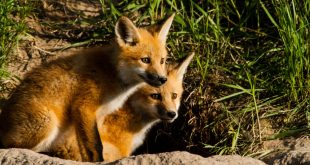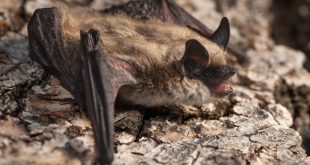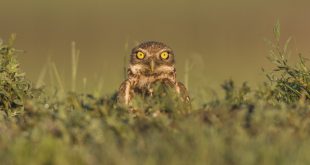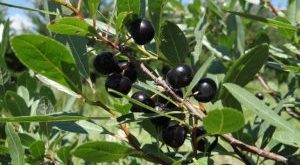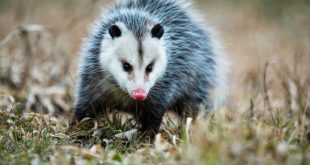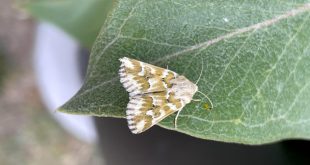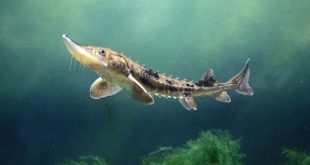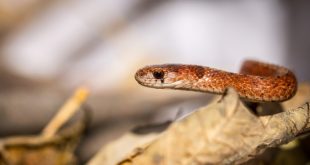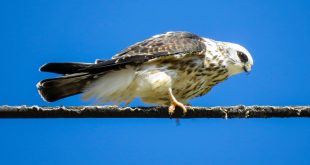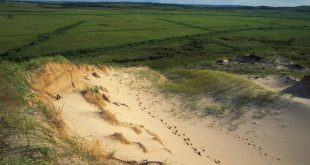Monica Macoubrie, Wildlife Education Specialist From the Labrador retriever to the Chihuahua, from the coyote to the swift fox, it’s sometimes hard to see similarities between all these animals when they seem so vastly different. But the truth is, whether it’s a herding dog, lap dog or a wild “dog” you may see out in the prairie, all these canines, or canids, have a single common ancestor. Canids are mammals in the order Carnivora (carnivores) and the family Canidae, which …
Read More »August Wildlife Viewing – Bats
By Olivia DaRugna Bats are usually in the spotlight only around Halloween and during Bat Appreciation Week. However, we are going to break the norm, because August is a great time to observe the world’s only true flying mammal. So, before homework and school sports start back up, get outside in the early evening to look up at the sky for glimpses of these evening aerial acro-bats — pun intended — as they quickly dive and turn to catch their …
Read More »At-risk Species Spotlight – Burrowing Owls
July is a great time to view burrowing owls near prairie dog colonies. By Olivia DaRugna Burrowing owls, as their name suggests, nest in underground burrows that were excavated by semi-fossorial animals, such as ground squirrels, prairie dogs and badgers. Not surprisingly, burrowing owls often inhabit black-tailed prairie dog colonies during the breeding season in Nebraska. After laying eggs, the parents incubate the eggs for about a month, and young birds remain near the nesting burrow for at least another …
Read More »Foraging for Wild Fruits and Berries in Nebraska
I always get rather impatient this time of year. Is it because of the weather being so hot, humid and hazy? No. Is it that the hunting seasons are just around the bend? No. Then, why? Well, I am a gatherer, a prairie wanderer, and I am anxiously waiting to harvest elderberries during these dog days of summer. However, it’s not quite time yet. Here I am checking out wild elderberries for ripeness on a Saunders County, NE farm in …
Read More »Nebraska’s Only Marsupial
By Monica Macoubrie, Wildlife Education Specialist With a nearly hairless, scaly tail, a mouth full of teeth, the ability to “play dead” and its overall I-don’t-give-a-dang attitude, the opossum might be one of the most unique mammals to be waddling around Nebraska. I guarantee by the time you are done reading this article, you will, at the very least, have a little more respect and love for this remarkable marsupial. Opossums are Marsupials The Virginia oppossum is a marsupial. When …
Read More »July Wildlife Viewing – Magnificent Moths!
By Olivia DaRugna, Watchable Wildlife Biologist Moths are not just the dull-brown insects that swarm around your porch lights at night. They are much more interesting and can be quite beautiful. Moths also play important ecological roles as prey for many predators, such as bats and pollinators of night-blooming flowers. Some moths are even indicator species of a healthy environment. July in Nebraska is a great time for observing these incredible insects, and you don’t have to go far. Viewing …
Read More »The Sturgeon of Nebraska
By Monica Macoubrie, Wildlife Education Specialist Picture this: You’re fishing on the Missouri River and all a sudden, you feel your line tug hard! You have a huge fish ready to pull you in — a real monster at the end of your line. Your adrenaline is going, and as you reel in the fish, you start to see its tail emerging from the water. You see rows of scales and a shovel-like nose. “What in the world is this?!” …
Read More »DeKay’s Brownsnake
By Marissa Jensen Nebraska is home to 29 species of native snakes with each species claiming its own unique characteristics, habits, and habitats. And for those who find themselves a little squeamish about even the mere mention of snakes, we have the perfect one to introduce you to. The Dekay’s brownsnake (Storeria dekayi) is a non-venomous snake named in honor of the 19th-century naturalist and zoologist, Dr. James Ellsworth De Kay, who collected the first known specimen. With an average …
Read More »Mississippi Kite Comeback
By Julie Geiser The Mississippi kite (Ictinia mississippiensis) is a small raptor that many people don’t know about. After reading this, hopefully you’ll keep an eye on the sky as these graceful birds will leave you admiring them. The Mississippi kite is about the size of a peregrine falcon; their body length is about 13 to 15 inches, with a 3-foot wingspan. They weigh 7 to 14 ounces. Both the male and female are similar in appearance and have gray …
Read More »Prairies Here and Prairies There
By Monica Macoubrie, Wildlife Education Specialist If you took a road trip from one side of Nebraska to the other, you will marvel at the change in landscape from east to west. In the east — aside from being home to 66 percent of Nebraska’s population – you will see deciduous trees, bluffs and the Missouri River. In the central portion of Nebraska, you have the Rainwater Basin, gentle rolling hills and tributaries of the Platte. And finally, just before …
Read More » Nebraskaland Magazine
Nebraskaland Magazine
